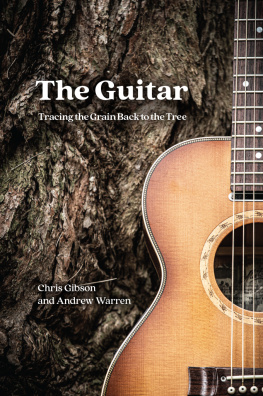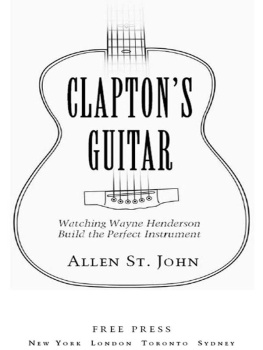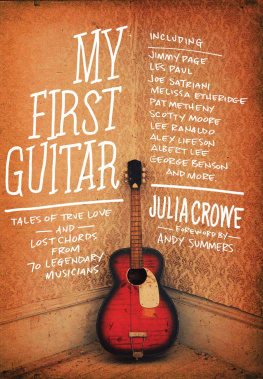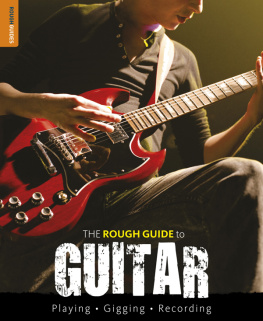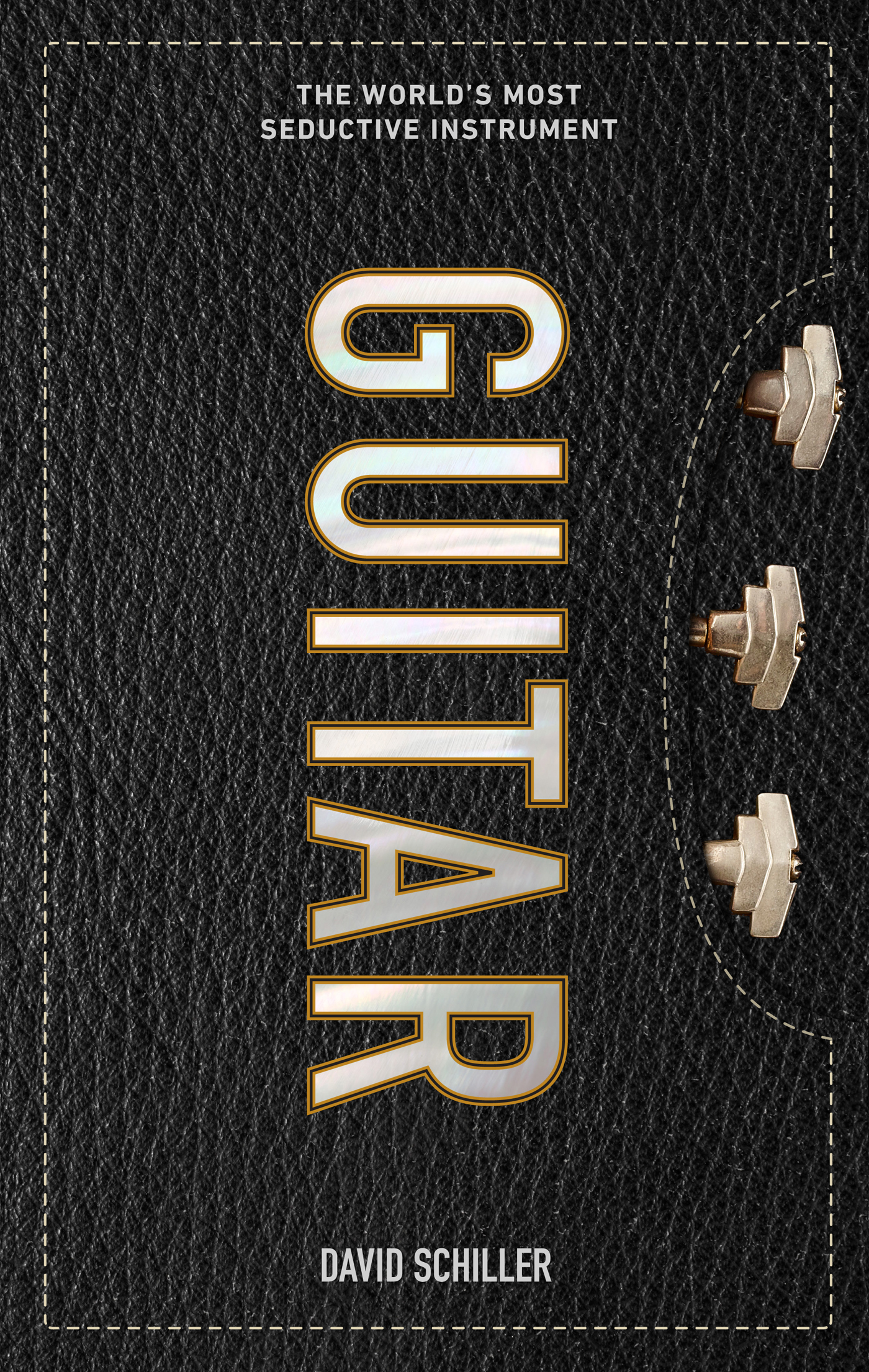
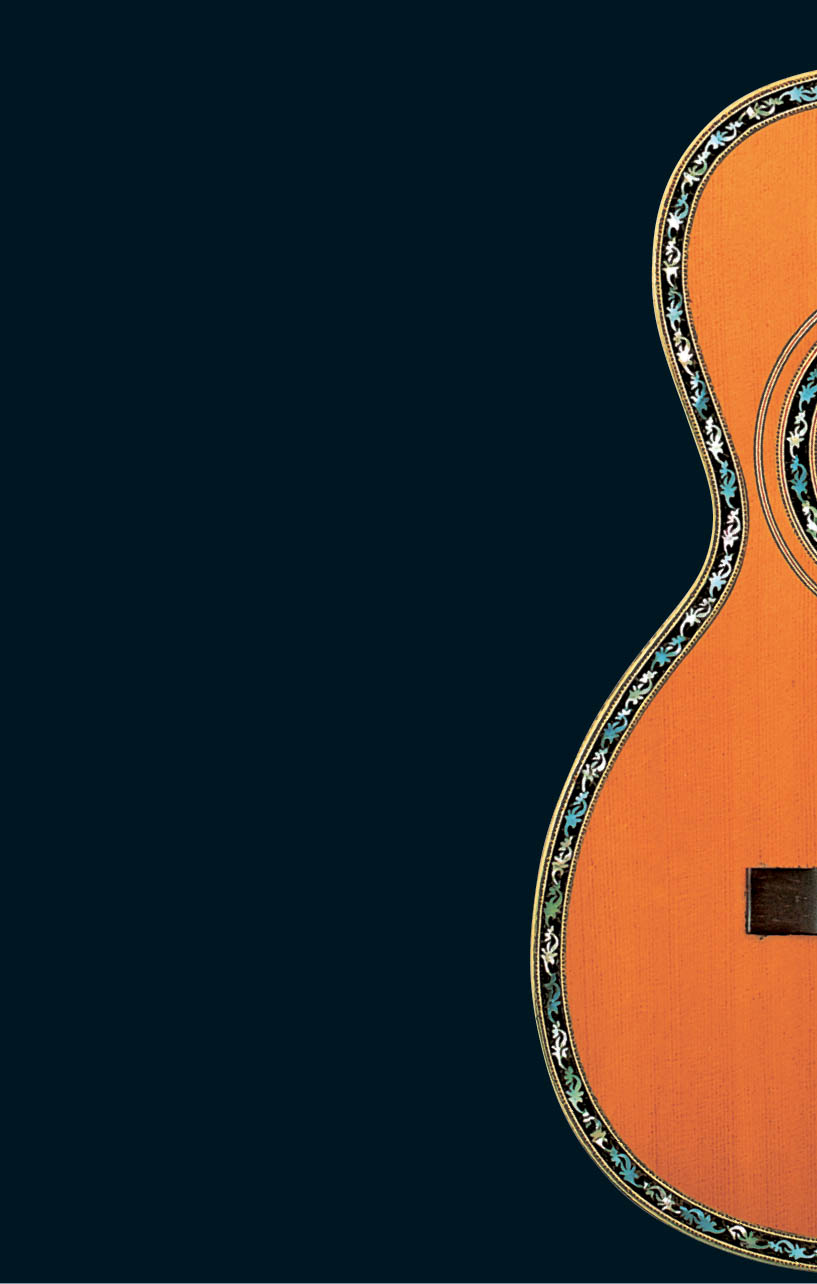

The Worlds Most Seductive Instrument
DAVID SCHILLER
workman publishing New york
CONTENTS
Introduction
F our chords and ten picks ago, or so it seems, the Beatles arrived in America and sent a generation of kids, like me, into the waiting arms of music stores and guitar teachers. I can still remember sitting in a windowless practice room struggling with Nowhere Man on a cheap Kay archtop while my teacher, Mr. Mondillo, patiently listened. It not only seemed impossible; it seemed silly. These plodding chords had nothing to do with the Beatles. Besides, Id started these lessons too late. While all my friends were forming and re-forming bands, saving up for new guitars and amps, trading licks, collecting albums, I was off to the side, reading books and dreaming about writing them.
Yet the Kay kept calling. Though it was the kind of guitar that your parents might buy if neither you nor they knew the first thing about guitarslong gone now, it looked a lot like the it did have two virtues: One, it was easy to play, with the fast, narrow neck and low action of an electric. But more important, it looked cool. No one else had anything like it. Where had it come from? Who made it? And why did it sound so... thin? Especially compared to my friends jumbo Martin D-35?
THE AUTHOR'S GUITARS:

A 2014 Kellycaster, built for the author by Rick Kelly at Carmine Street Guitars (see ) out of wood reclaimed from the renovation of Chumleys, a legendary former speakeasy (and now, post-renovation, a restaurant) in New York Citys West Village.
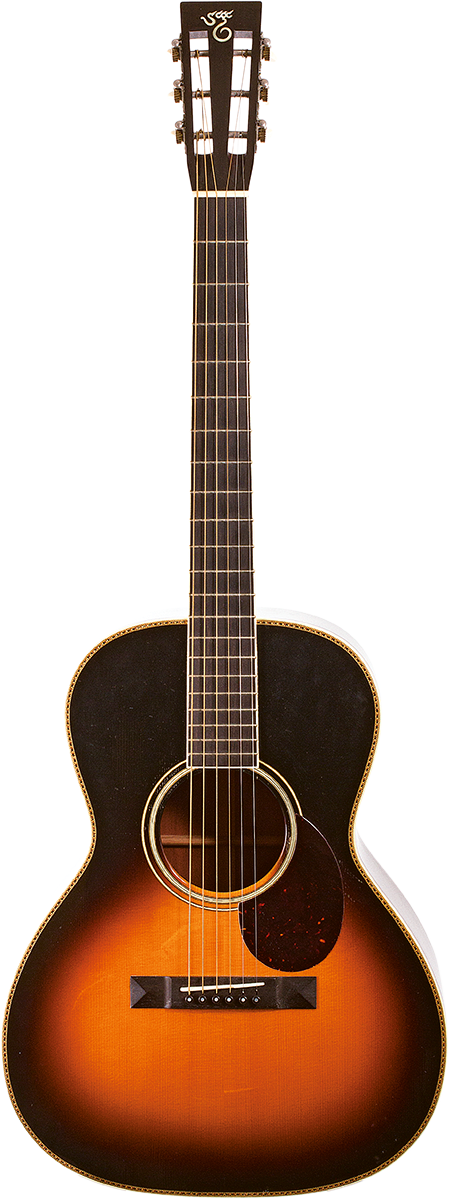
A Santa Cruz H-13, c. 2008, a model whose design was inspired by the 13-fret Gibson Nick Lucas that Bob Dylan played in the mid-1960s.
Looking for answers to questions like these opened up a different side to the world of guitarsnot the players realm of riffs, chords, scales, and modes, but the beautiful universe of wood, strings, air, and magic. Of genius builders and tinkerers like Lloyd Loar and Leo Fender. Artisans and visionaries like C. F. Martin, John DAngelico, Ken Parker, and Linda Manzer. And the eccentrics. So many eccentrics.
Because one of the first things to understand about the guitar, one of the things that makes it unique, is that it is not just another musical instrument. Unlike a piano, say, or a clarinet, the template is a work in progress. The principles are still being questioned, tested, experimented with, and improved upon. Wood whisperers, artists and sculptors, engineers, back-to-the-land makers, philosophers, inventorsand musicians of courseall have played, and continue to play, a role in the guitars evolution. The very basicslike where to put the sound hole, or even whether to use oneare openly challenged, and the tiniest details, from what kind of glue is used to how many times to wind a pickup bobbin, seem forever up for debate.
This same sense of infinite possibility applies to the playing of the guitar, too. It was always the peoples instrument, showing up in taverns, accompanying troubadours. It requires no special training. You dont even need to read music. A complete beginner could literally pick up a guitar and within a very short time, maybe only an hour if one has good hand-eye coordination, learn to play the simple three-chord progression that is the backbone of a gazillion popular songs. Try that with a cello! On the other hand, if the guitar really gets its hooks into you, you could spend a lifetimemultiple lifetimesexploring what it, and you, can do. It plays harmony, melody, rhythm, and every scale imaginable from the basic major and minor to Egyptian pentatonic. (And thats before you explore open tunings.) Its so versatile, too, a quiet friend to sit alone with for hours, noodling, yet always at the ready to accompany any other instrument. It really plays well with others, especially with amplification.
Finally, perhaps, whats most special about the guitar is the physical bond it creates. A guitar has a body. It has a voice. It has a look we can admire, show off, modify, identify with. Players can spend hours, days, a lifetime with it, cradled in our arms. We pack it up and carry it everywhere, and when we meet a fellow guitar lover, we can geek out and speak about guitars for hours. Its both universal, and deeply intimate, as ubiquitous as any other consumable (just walk into your local Guitar Center), and yet, transcendent. It even falls prey to the most believed-in romantic myth: The one is out there, just for you. But unlike said myth, no guitar lover ever needs to settle for just one! So turn the pages, and maybe youll find your next true love...
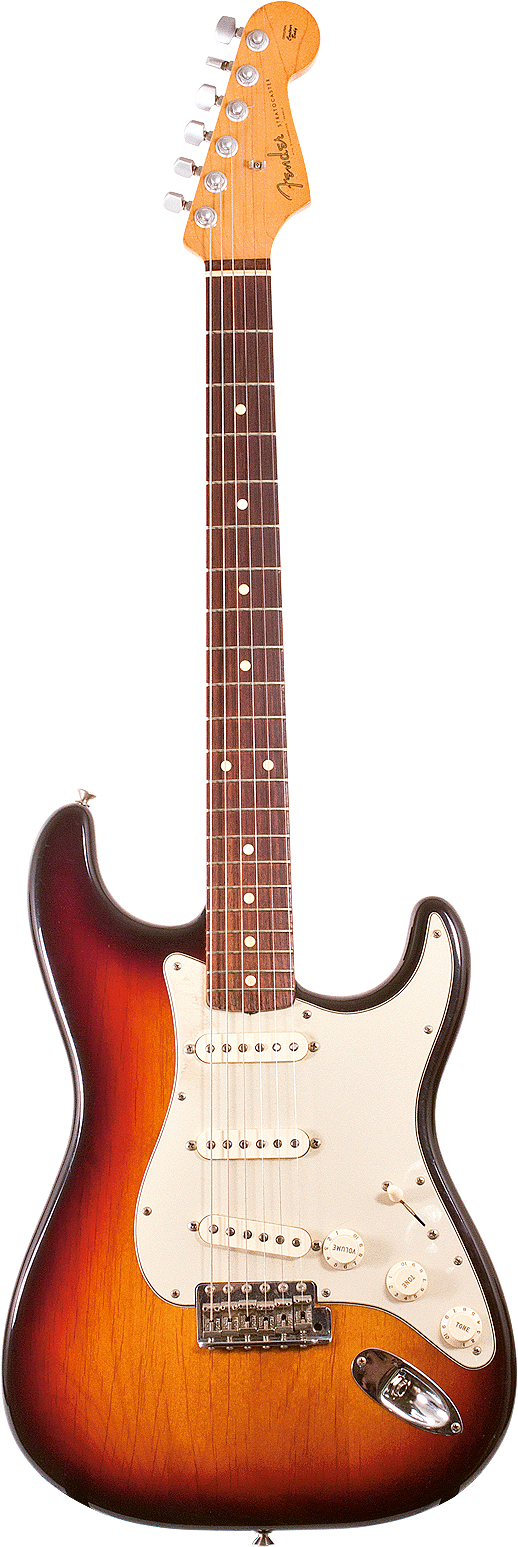
Continuing the Dylan themea Reissue 62 Fender Stratocaster, c. 2010, just like the guitar Dylan plugged in when he went electric at the 1965 Newport Folk Festival.
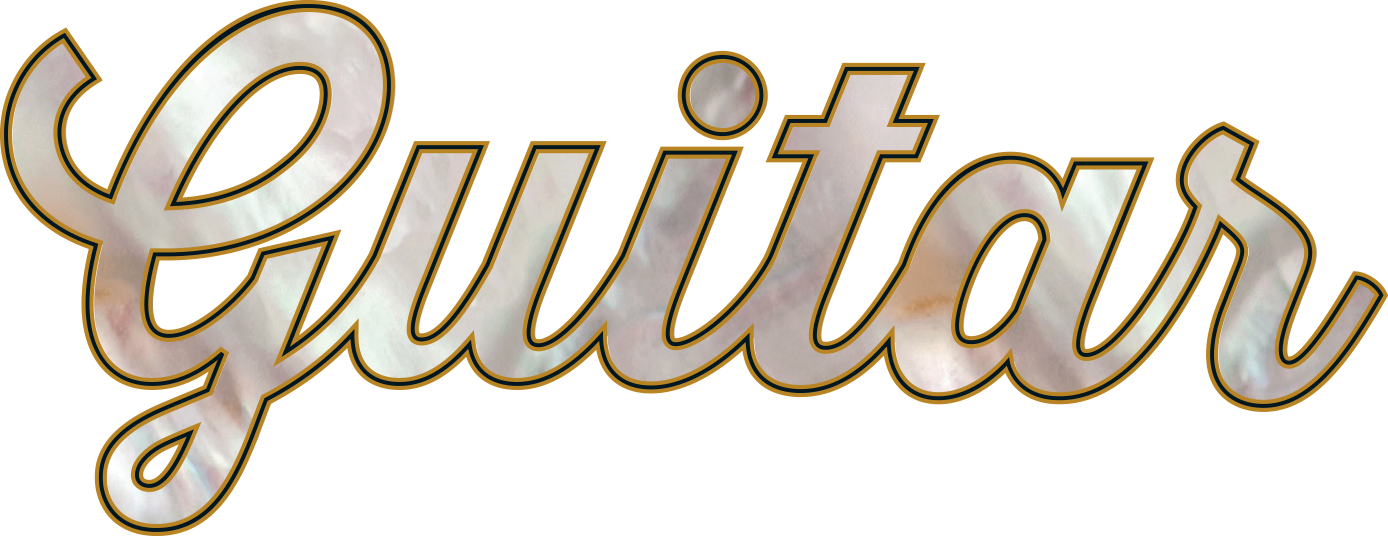
The Maltese Falcon of Guitars
MODEL: New Yorker Cutaway Special, The Teardrop
BUILDER: DAngelico, 1957
TYPE: Archtop Acoustic
OF NOTE: Not only the most unusual guitar DAngelico made, but also the fanciest, with its teardrop pickguard, curved bridge with the downward point, and six-ply binding Extended fretboard on the treble side
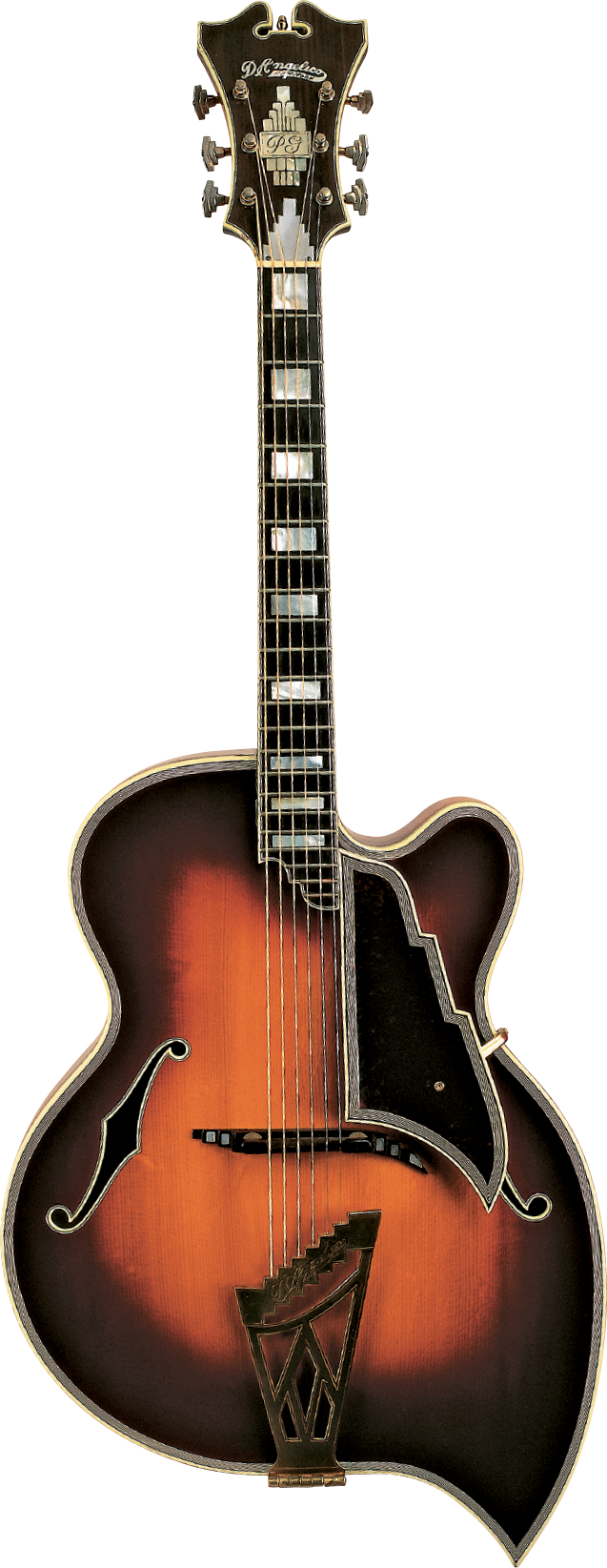
O ne day a local guitarist named Peter Girardi (PG on the headstock) walked into John DAngelicos shop on the Lower East Side and asked him to build an instrument that would make his nightclub audiences really take notice. DAngelico came up with an idea to extend the lower body in what he called a can opener shape. Years later, after hearing stories about this magical, mythical instrument, the collector Scott Chinery tracked it downit had resurfaced at a Staten Island guitar store. Chinery scooped it up for the bargain price of $150,000 (he was offered $250,000 for it the very next day). But what really struck him, beyond the singular beauty of the guitar, was how the teardrop opened up the sound, creating one of the most powerful archtops he had ever played.
It Will, It Will Rock You
MODEL: Red Special, aka The Old Lady
BUILDER: Brian and Harold May, 19631965
TYPE: Semi-Solid-Body Electric
OF NOTE: Everything about this guitar is uniquethe neck is made of wood from a fireplace mantel, buttons are used for the fret markers, the tremolo arm is fashioned out of a saddlebag holder and capped with a piece of a plastic knitting needle Original handmade pickups were quickly replaced by a set of Burns Tri-Sonics A Brian May Back to the Light promotional sixpence was added to the headstock
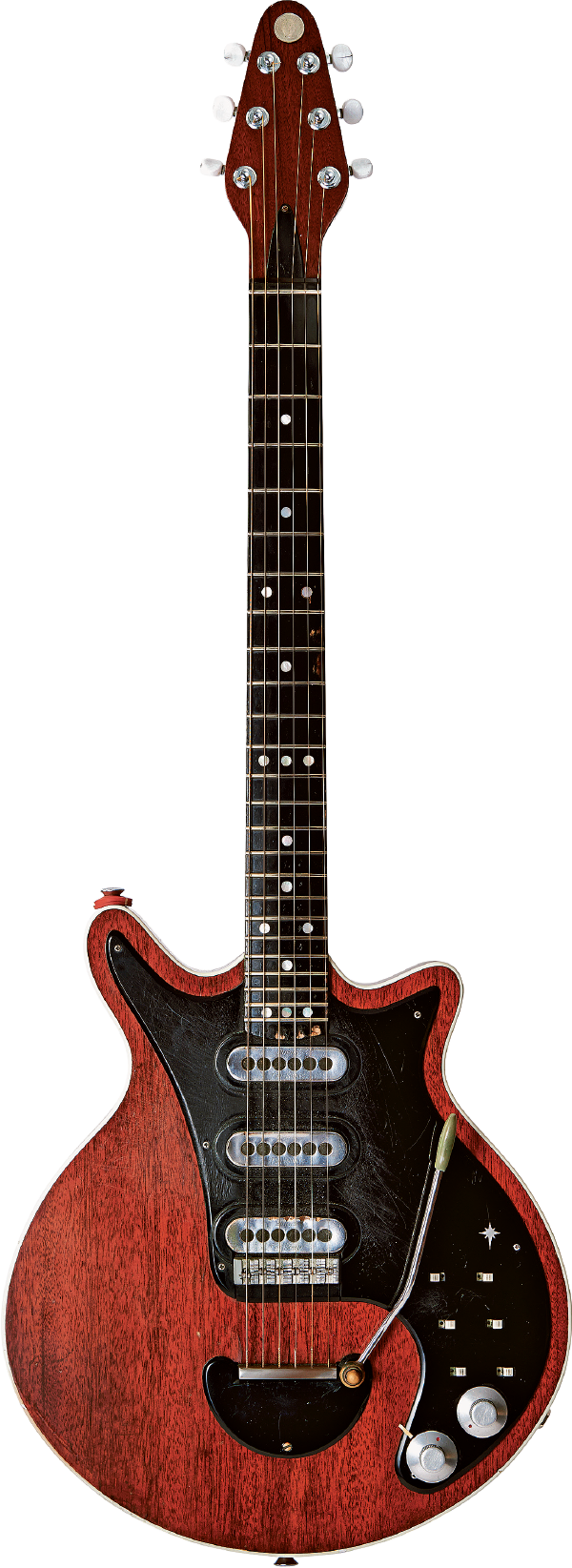
Next page

